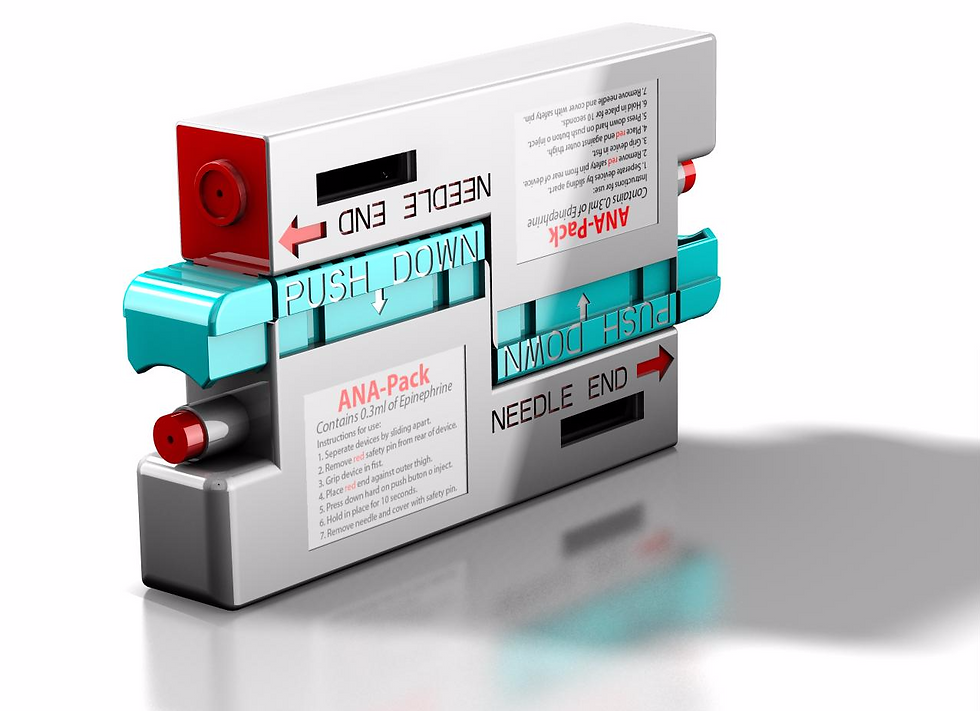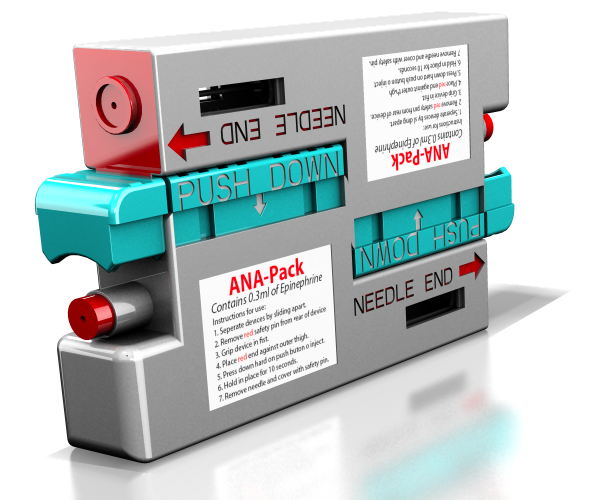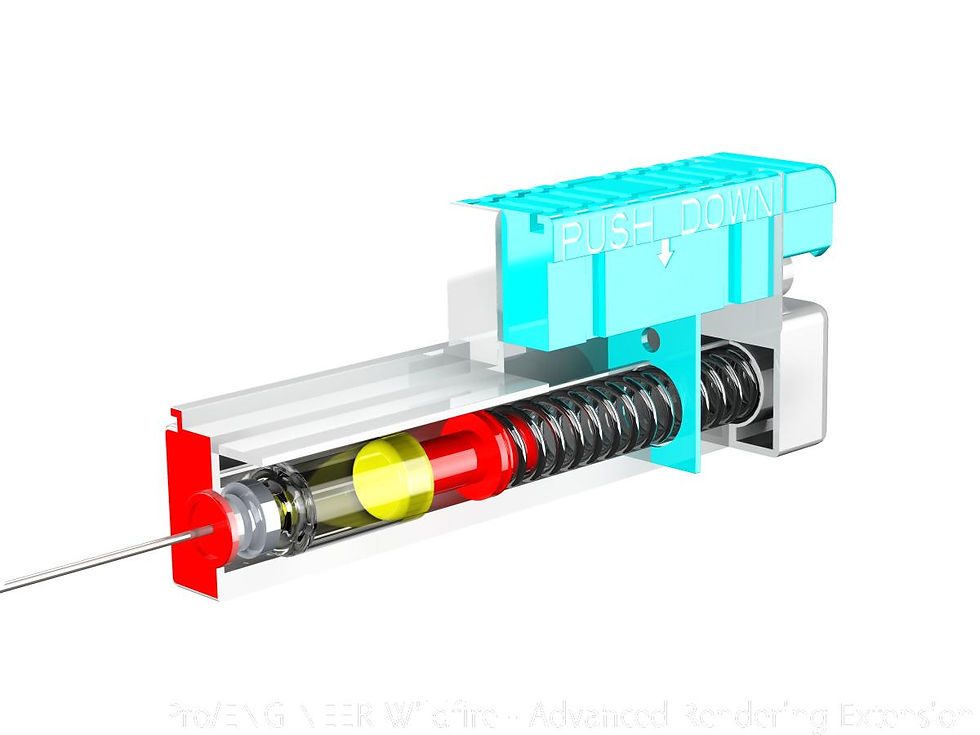
Adrenaline Auto-Injector
Anaphylaxis is a sever, potentially life-threatening allergic reaction that can develop rapidly also know as anaphylactic shock.. From 1990 to 2005 there was a 700% increase in anaphylaxis related hospital admissions. The most common emergency medication prescribed to allergy sufferers is an adrenaline auto injector. As directed by medical professionals two of these injection devices must be carried at all time, however many user's find these cumbersome and difficult to carry in everyday life.
After carrying out user research and an online survey it was found that;
-
Only 72% of allergy sufferers carry their medication with them at all times.
-
80% feel that current auto-injectors are not portable enough.
-
97% would carry their medication with them more often if they had a smaller, more compact device available.
The aim of this project was to design a product that will eliminate the problem of auto injectors being too difficult to carry. This would encourage users to have their medication with them at all times, decreasing the chances of hospitalization, harmful reaction or even fatality.
Investigation into types of injectors was carried out as well as an in-depth online survey to gather feedback from allergy sufferers/auto-injector users.
From there, a number of concept generation methods were used to produce a wide range of ideas. A focus group, with a number of allergy sufferers, took place where basic prototype models were tested. Dot sticking was used to narrow down into three strong concepts and then an evaluation matrix was used.
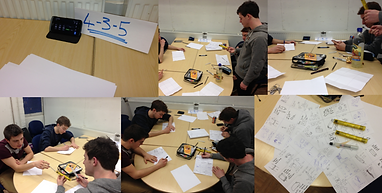




After further user testing of basic prototypes and evaluation methods it was decided that an amalgamation of key features from various designs was necessary to meet the requirements of the user.
With a final concept selected an indepth investigation into the spring loaded mechanism was carried out and the appropriate calculations were made to ensure that the newly designed mechanism would provide enough impact for the needle to penetrate the user's leg.



With a new mechanism designed with appropriate dimensions of the needle, vial and spring; the rest of the injector could be modelled using 3D CAD software.
Using the CAD model's dimensions a prototype was created to prove the functionality of the spring loaded mechanism which can be seen below.


The product designed eliminates the problem of auto-injectors being too difficult to carry by reducing the over all size of a single injector but also including a mating feature allowing the allergy sufferer to carry two injectorions at once as is suggested by medical professionals. The new spring loaded mechanism eliminates the "swing and stab" technique common with other auto injectors making the process less intimidating for users. The safety locking pin in the mechanism can also be used as a needle cover post injection avoiding any accidental needle sticks until the device can be clinically disposed of.




Remove safety pin which locks push button in place.
Holding the needle end against the outer thigh the push button is pressed aligning the circular hole on the button shaft with the spring.
The compressed spring is released, firing the syringe and needle out through the end and into the user's leg.
The spring, still in tension then pushes the plunger into the vial releasing the adrenaline solution into the user's system.
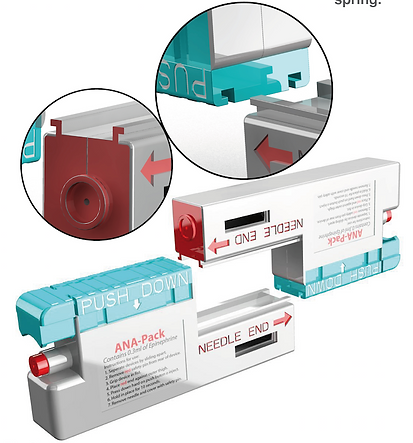
Sliding mating feature allows for two injections to be carried at all times

The safety pin also acts as a needle cover for use after injection.
